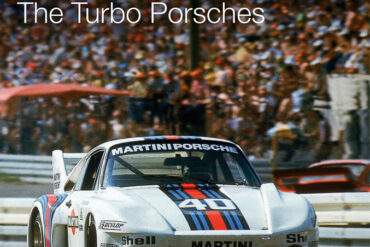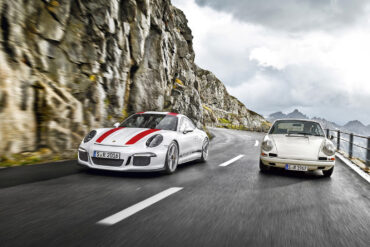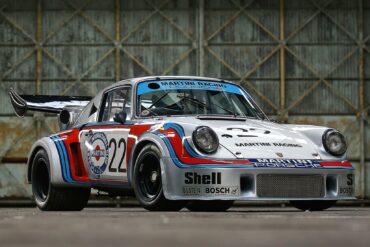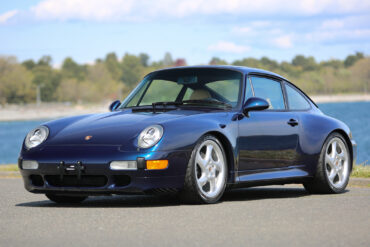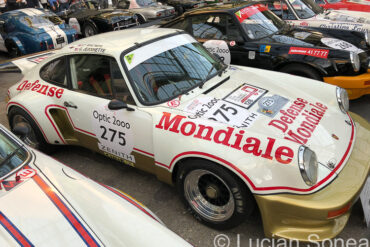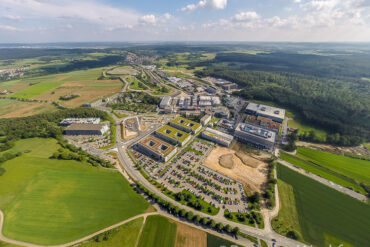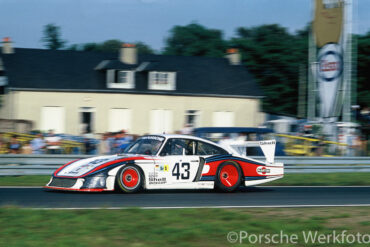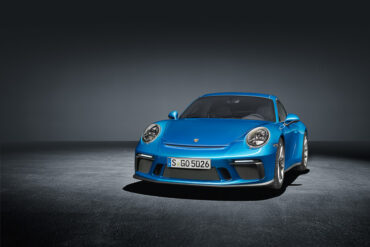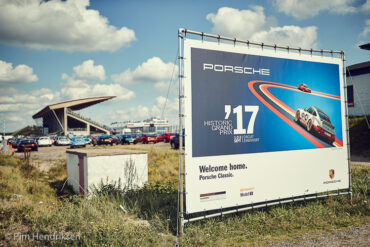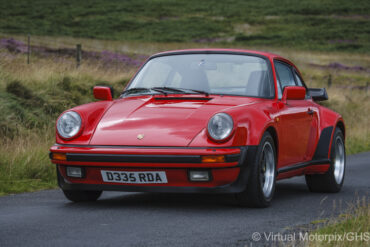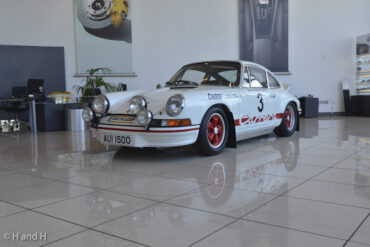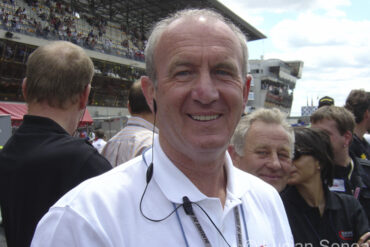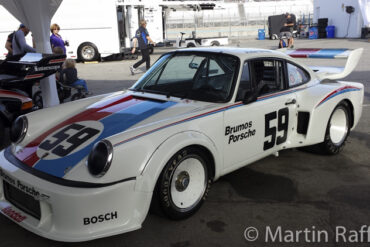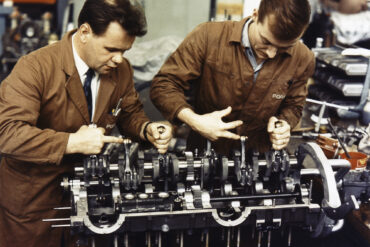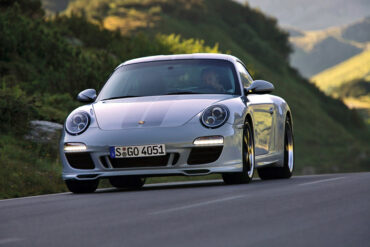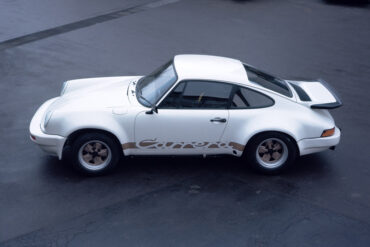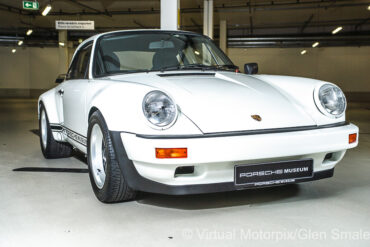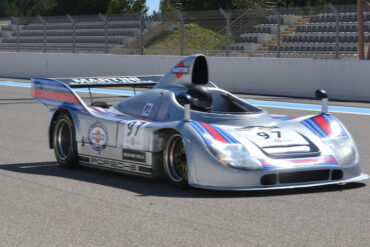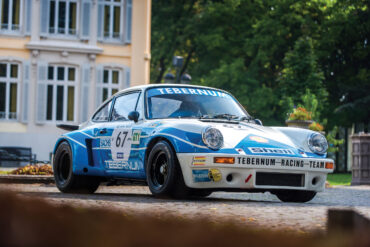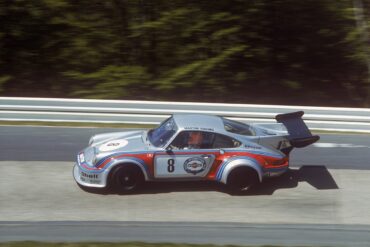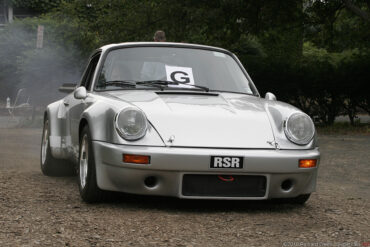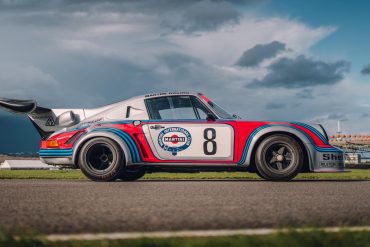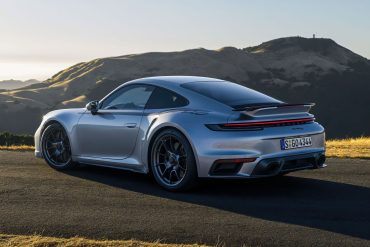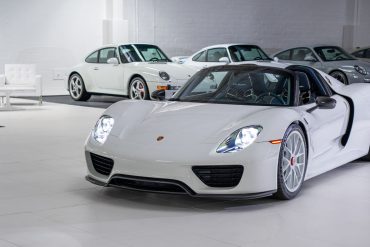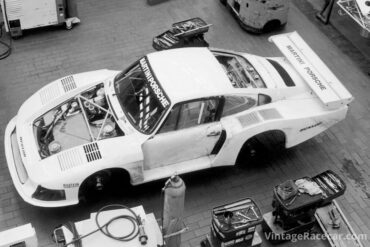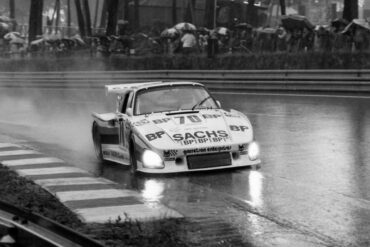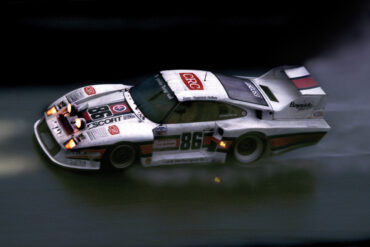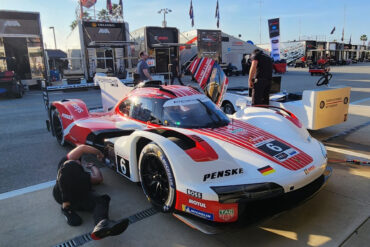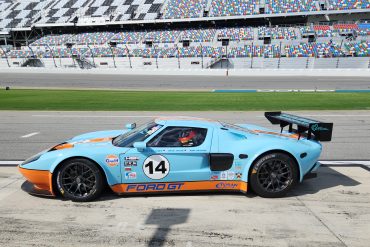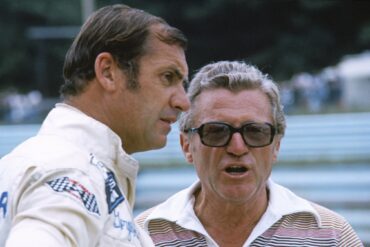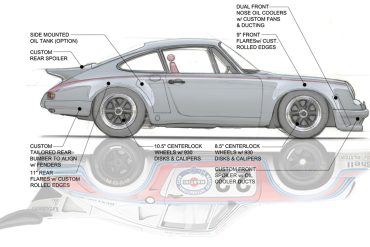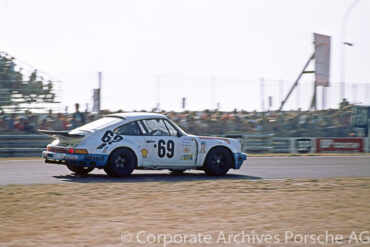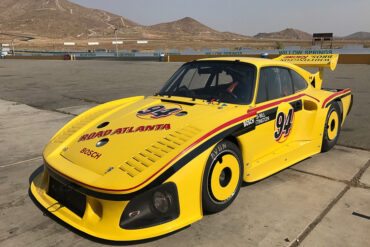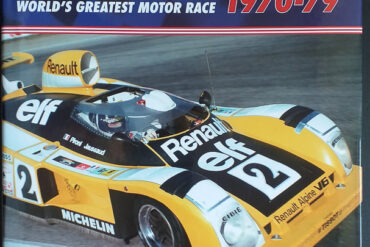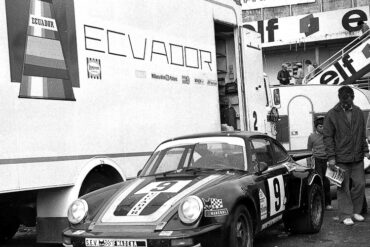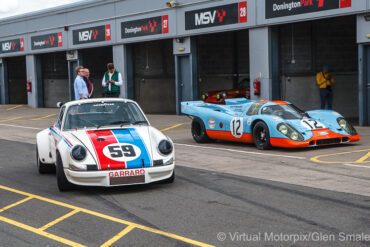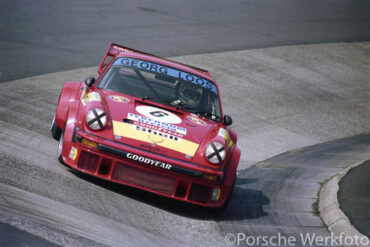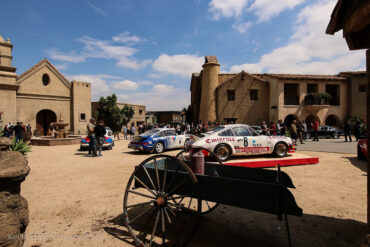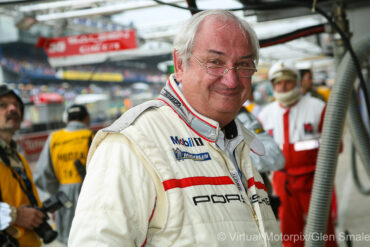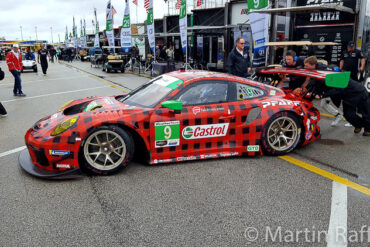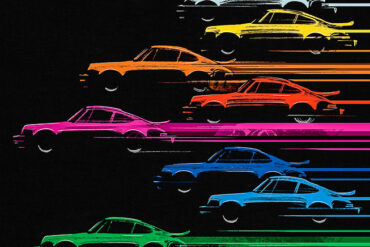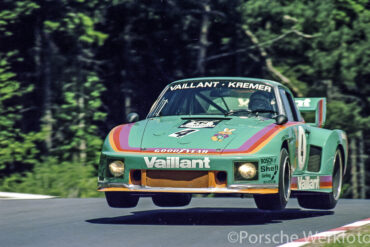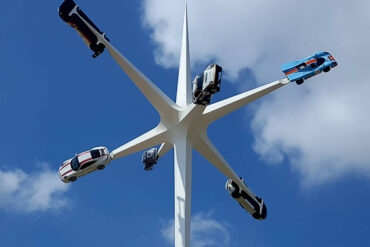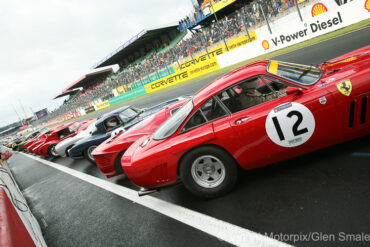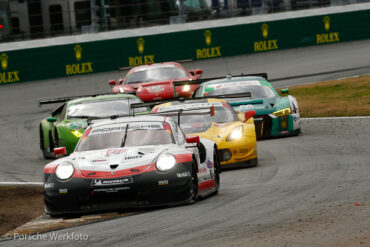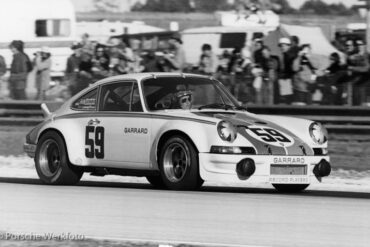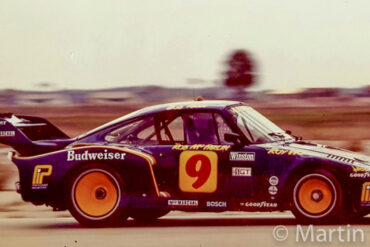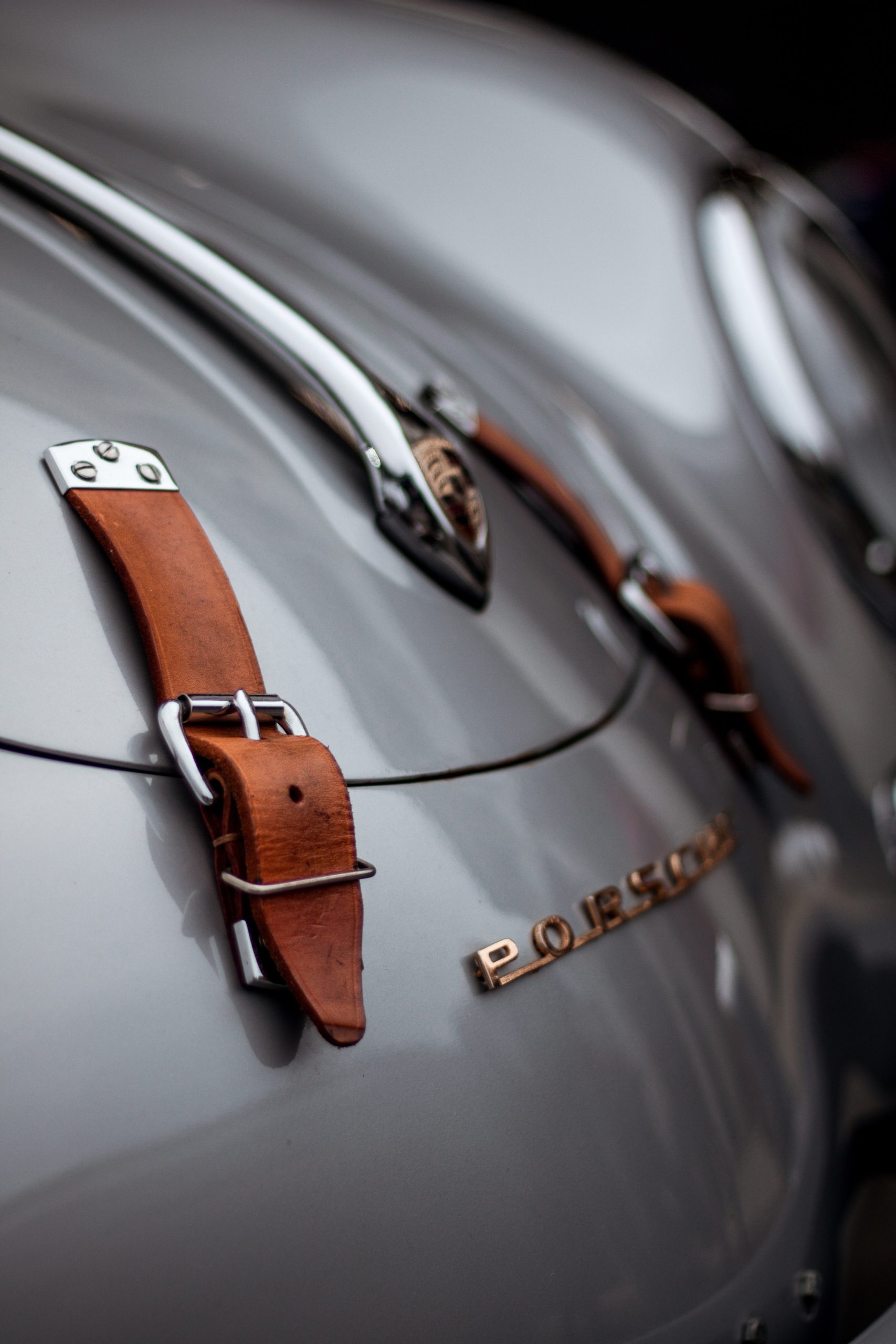Porsche 930 to 935: The Turbo Porsches – by John Starkey © Veloce Publishing Ltd Much has been written about...
149 results for
1973 porsche 911 RSR
The All Time Greats – 70 Best Porsches of All Time (Ultimate List) Clearly we have been a bit of...
Definitive List of the Best Racing Cars Porsche Has Ever Raced Porsche Race Cars Porsche 917 Porsche 550 Spyder Porsche...
Porsche has made a lot of cracking 911s over 50+ years. We Pick the Best Production, Limited Edition & Race...
This group photo shows the vast range and quality of the cars entered in the 2018 edition of the Tour...
Weissach – Porsche Werk 8 – on 9 June 2016 By the late 1950s, the German Wirtschaftswunder was well underway...
#5 Porsche 908/3 – Juan Fernandez/Francesco Torredemer/Eugenio Baturone – NRF The 1972 season broke, ushering in with it a new...
The 911 GT3 with Touring Package was unveiled yesterday at the 67th International Motor Show (IAA) in Frankfurt, Germany. Available...
Porsche Historic Grand Prix Zandvoort The crowds attending the Masters Historic racing weekend at Zandvoort were treated to a festival...
Celebrations for the #55 Porsche 550 Spyder after finishing third in the 1954 La Carrera Panamericana. Sitting on the #55...
Porsche 911 Carrera RS Sport Lightweight ‘AUI 1500’ as it is today The Porsche 911 Carrera RS 2.7 broke cover...
The Seikel Motorsport team last raced in the 2007 Le Mans, having participated on no less than eleven occasions in...
This is the Peter Gregg car (chassis #930 770 0952) as shown at the Porsche Rennsport 2015. In early 1977,...
Valentin Schäffer (1978) Another keen young recruitee to Zuffenhausen in the early 1950s, Valentin Schäffer, would become Porsche’s racing turbo...
The 997 Sport Classic is a limited edition version of the 997.2 Carrera S coupé inspired by the 1973 Carrera RS 2.7. The engine is rated at 413 PS (304 kW; 407 hp) and features a newly developed resonance intake manifold with 6 vacuum-controlled switching flaps. It includes a 6-speed manual transmission, double-dome roof (informally called double bubble roof), 44 mm (1.7 in) wider rear fenders, SportDesign front apron with a front spoiler and a fixed 'duck tail' rear wing. Only 256 were made.
Following the famous 1973 F-model 911 Carrera RS 2.7, Porsche built its successor based on the G-model and it was called the 911 Carrera RS 3.0. With its 172 kW engine, it was the most powerful series production street-legal Porsche made so far. With its new 3.0-liter engine, featuring mechanical fuel injection, it was capable of 230 hp. While 1,580 Carrera RS 2.7s were built for 1973, only 56 Carrera RS 3.0s were built for 1974.
Built so that the factory Rothmans Porsche Rally Team could hit the international stage, the SC RS used the Turbo’s body with fibreglass bumpers and aluminium doors. In Autumn 1983, Porsche presents the 911 SC/RS for motor racing. The engine originates from the 911 SC, with improved performance achieved by the mechanical ball fuel injection, increased compression, the cylinder heads from the 935 and forged pistons. Racing seats are fitted in place of the standard seats.
Porsche decided to end its 20-year history of factory sports car racing and sold the 908/03 cars to customers. In 1975, some 908s were fitted with turbocharged engines, similar to those used in the Porsche 934 GT car. Several customer-908s were upgraded with 936-style bodywork. The Porsche 908/80 Turbo of Joest and Jacky Ickx which finished 2nd in the 1980 24 Hours of Le Mans turned out later to have a real Porsche 936 chassis, though.
For the 1974 racing season 911 Carrera RSR 3.0 (246 kW) and RSR Turbo 2.1 (338+ kW) were created - the 3.0L for the customer teams and the 2.1 turbo for Porsche’s own team. The Carrera RSR 3.0 was made in small numbers for racing. The 3.0 RSR would go on to become the most successful Group 4 racing car of its time thanks to its combination of low weight, immense Porsche 917 brakes, impeccable handling, and a 330+hp naturally aspirated flat-6.
For 1974 both the 911 Carrera RSR 3.0 and RSR Turbo 2.1 were created - the 3.0L for the customer teams and the 2.1 turbo for Porsche’s own team. The 911 Carrera RSR Turbo 2.1 developed 338-368 kW in power, but as the engine was small, the turbo lag was big and it wasn’t as easy to drive out of the corners as it was with the 3-litre normally aspirated car. Weight reduction measures included plastic hoods, fender flares and doors and an aluminium safety cage.
In the 1970s Porsche was serious about turbocharging and this prototype signaled the way for later cars like the 930 and the RSR 3.0. It was also the one of the very first show cars fitted with the wide body, large alloy wheels, whale tail and a turbocharged version of the flat-6. All these details eventually appeared on the 911 RSR 3.0-liter race car of 1974. The show car was built from a standard 911S fixed with a radical body kit.
Incredibly successful in Le Mans Porsche was incredibly successful with the 917 in Le Mans and in the World Championship...
Half a century of the Turbo To mark the 50th anniversary of the 911 Turbo, Porsche is launching an exclusive...
Much of what Porsche learns in motor racing benefits the production models and thus the customers. The story of the...
The life of Jonkheer Gijsbert “Gijs” van Lennep is by no means short of special moments. In 1971, he won...
You already read about our preview of The White Collection auction here on Stuttcars. Fifty-five Porsches, mostly in white, with...
Porsches have scored a record 16 overall victories at Le Mans, 14 similar triumphs in the Rolex 24 at Daytona...
Starting his career in the early ’60s behind the wheel of a Mini, John Fitzpatrick quickly worked his way to...
Looking Back on a Brilliant Career… One Photographer’s Personal Recollections of the Most Successful American Endurance Racer of All Time...
Photos: Martin Raffauf, Porsche, NBC/Peacock 61st Rolex 24 at Daytona starts new GTP era After months of anticipation, the 61st...
HSR (Historic Sportscar Racing) held its now annual 24- hour historic event at Daytona on November 5-6. The 24-hour is...
Follmer was born in Phoenix in 1934, though effectively he became a Californian as his family moved to Pasadena before...
Today, Classic 9 Motorwerks proudly announced the construction on its new headquarters has begun. This huge undertaking of their new...
British GP meeting which Nick Faure led outright, starting from the second row, against the Falcons and BGG Escorts. But...
1979 Porsche 935 chassis #009 0004 – Willow Springs International Raceway © Robert Graham Junior The phone rang, it was...
Le Mans: The Official History 1970–79 by Quentin Spurring © Virtual Motorpix/Glen Smale This edition of Quentin Spurring’s fabulous series...
Le Mans 24 Hours, 14-15 June 1975: Porsche 9083 in the paddock ahead of the race (copyright Yves Ronga) When...
Toine Hezemans in his Brussels home, 2015 One of the Netherlands’ most successful racers, Toine Hezemans is part of a...
Luftgekühlt 6 – Porsche 356 street scene There was an obvious irony to Luftgekühlt 6. Somehow an event devoted to...
Norbert Singer, 24 Hours of Le Mans, 1996 Norbert Singer must rank as one of the most successful race engineers...
Pfaff Motorsports Porsche 911 GT3 R, a rather striking paint scheme! Despite crewing for one of the teams at this...
Turbo 3.0, by Ryan Snodgrass – © Parabolica Press Amongst its numerous attributes, Porsche sports cars have always been about...
Le Mans 24 Hours, 9/10 June 1979: Its a tense time as the lead car, the #41 Numero Reserve Kremer...
The Gerry Judah sculpture at the 2018 Goodwood Festival of Speed featured six Porsche cars mounted on a 52-metre-high star-shaped...
Exciting starting grid at the Le Mans Legends 2007 This coming weekend sees the running of the ninth Le Mans...
Rolex 24 at Daytona, 27/28 January 2018: Martin Raffauf’s 2018 Daytona Notebook takes a comprehensive look at the whole Daytona...
Peter Gregg and Hurley Haywood won the 24 Hours of Daytona on 3/4 February 1973 driving this 911 Carrera RSR...
The #6 Barbour, Stommelen, Mears car, a 935-78 (935-77A), enters the Sebring front straight. While this was the fastest car...
No More Content


